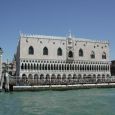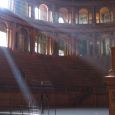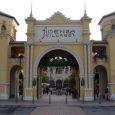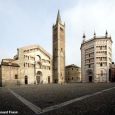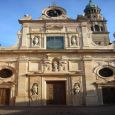Parma
Advertisement
By Train
Parma railway station is on the Milan–Bologna railway.The station is currently managed by Rete Ferroviaria Italiana (RFI).However, the commercial area of the passenger building is managed by Centostazioni.Train services on all lines other than the secondary line to Suzzara are operated by Trenitalia.Each of these companies is a subsidiary of Ferrovie dello Stato (FS), Italy's state-owned rail company.
By Trolleybus
The Parma trolleybus system has been in operation since 1953.It replaced an earlier tramway network, and presently comprises four trolleybus routes.
Palazzo della Pilotta
is a complex of edifices in the historical centre of Parma, in northern Italy.Its name derives from the game of pelota.Built around 1583, during the last years of reign of Duke Ottavio Farnese, it developed around the corridor (Corridore) which connected the keep (Rocchetta, traces of which can be seen next the river Parma) to the Ducal Palace: the latter, begun in 1622 under Duke Ranuccio I, was never completed the façade on the Piazza della Ghiaia is missing and the annexed Dominican church of St. Peter was demolished only in recent times.The existing complex includes three courts: the Cortile di San Pietro Martire (now best known as Cortile della Pilotta), Cortile del Guazzatoio (originally della pelota) and the Cortile della Racchetta.The Pilotta was to house a large hall, later turned into the Teatro Farnese, the stables and the grooms' residences, the Academy Hall and other rooms.After the end of the Farnese family the edifice was sacked starting with Duke Charles I, who moved all the Farnese assets to Naples.
Farnese Theatre
is a Baroque-style theatre in Parma, Italy.It was built in 1618 by Giovanni Battista Aleotti.The theatre was almost destroyed by an Allied air raid during World War II (1944).It was rebuilt and reopened in 1962.Some claim this as the first permanent proscenium theater (that is, a theater in which the audience views the action through a single frame, which is known as the "proscenium arch"). However, when the theater was first built plays were not performed there.
Palatina Library
established in Parma in the year 1761 by Philip Bourbon, Duke of Parma.It is located in Piazzale Pilotta.The Palatina Library was named after Apollus Palatinus.Today the Library's collection contains more than 708 000 printed works, about 6 620 manuscripts, and 3 042 incunabula, 52 470 stamps.There is a unique musical section of 93 000 books.The music section was established in 1889.The electronic catalogue of the Palatina was started in 1994.The library was shelled in 1944.
Museo Glauco Lombardi
The Museum was created by the efforts of Glauco Lombardi (1881-1971), who devoted his entire life to the recovery, study and conservation of all that remained on the antiquary market or in private collections of the enormous artistic and documentary heritage of Parma under the Bourbons (1748-1802, 1847-1859) and Marie Louise, Duchess of Parma (1816-1847), largely scattered during the period of Italian Unification in various residences of the Savoy family.From 1915 to 1943 the original nucleus of the Museo Lombardi was housed in the ballroom and adjacent rooms of the Ducal Palace of Colorno. The year 1934 is a crucial one for the museum: it was then that Lombardi finally managed to stipulate an agreement with count Giovanni Sanvitale to sell to the Museum the precious objects that had belonged to Duchess Marie Louise, grandmother of count Giovanni.From 1997 to 1999 the museum underwent a complete, very difficult restoration, which became necessary after the acquisition of new buildings that, while changing little of the original order and criteria of the display planned and desired by Glauco Lombardi, made it possible to provide the museum premises with more modern and effective systems of security and utilization.
Ducal Palace
The Ducal Palace, built from 1561 for Duke Ottavio Farnese on a design by Jacopo Barozzi da Vignola.Built on the former Sforza castle area, it was enlarged in the 17th–18th centuries.It includes the Palazzo Eucherio Sanvitale, with interesting decorations dating from the 16th centuries and attributed to Gianfrancesco d'Agrate, and a fresco by Parmigianino.Annexed is the Ducal Park also by Vignola.It was turned into a French-style garden in 1749.
Information not available


